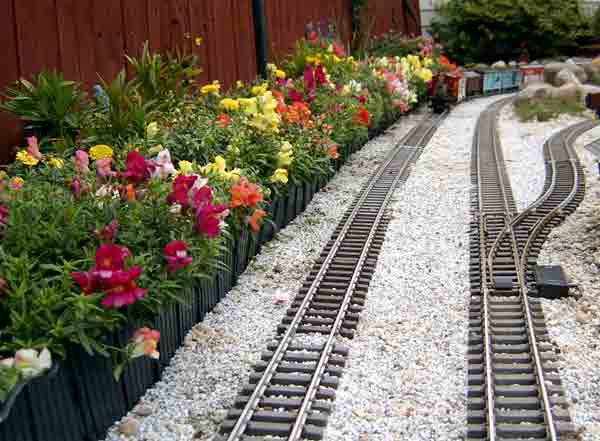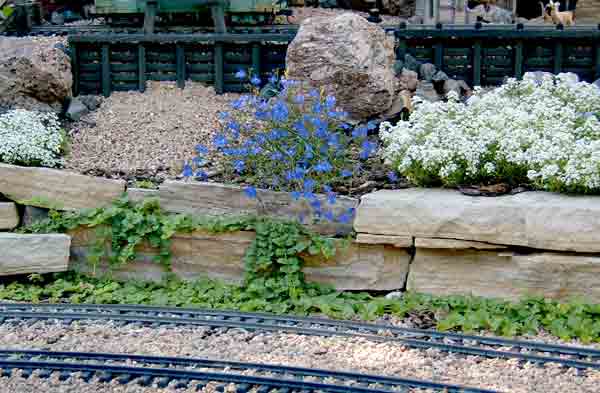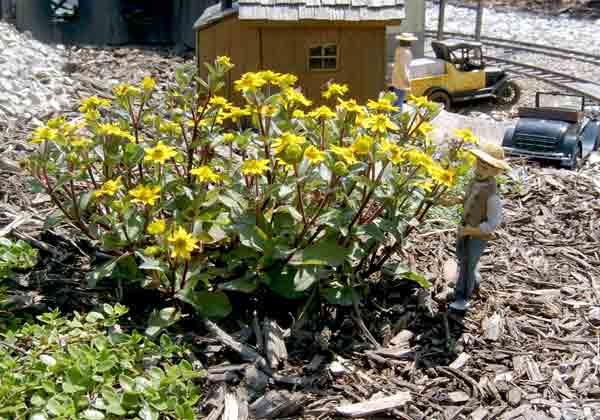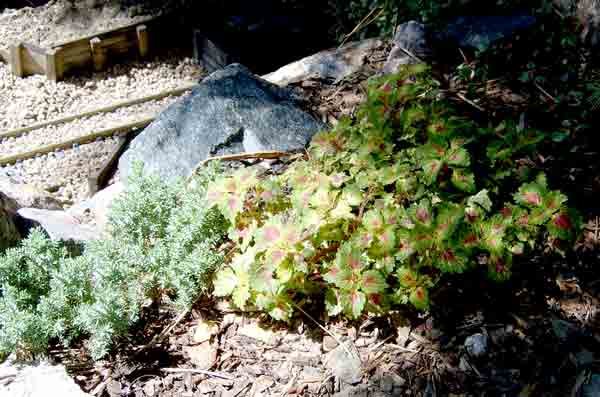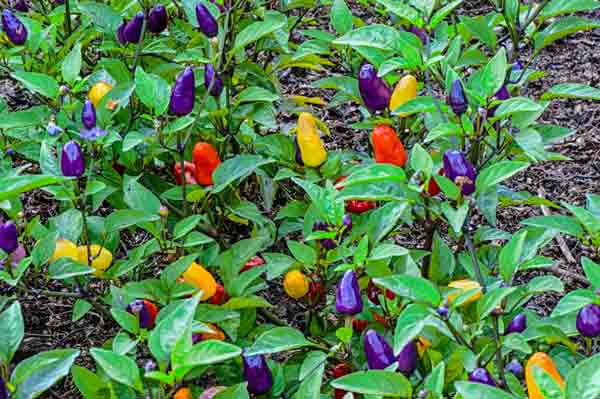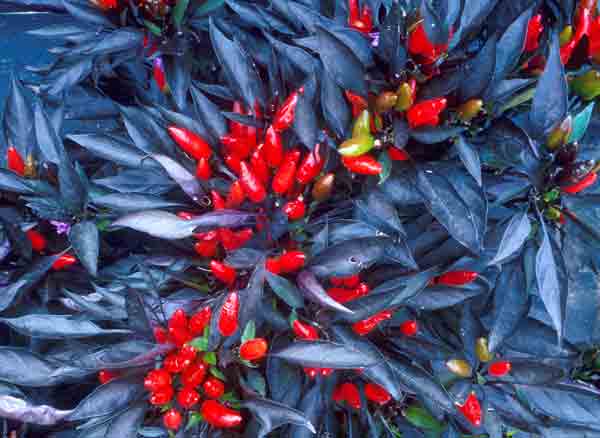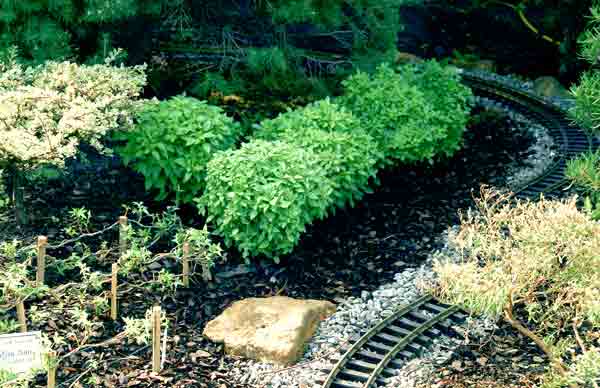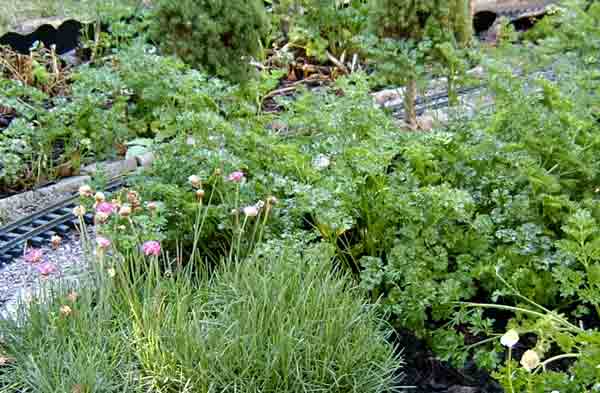Some of us like a little color in the railroad garden. . .and others like a lot. Annual flowering plants pack more color per square foot than do most perennials, and they often bloom nonstop all summer (photo 1). Annual plants, as opposed to perennials, are those that typically grow in one season, setting seed (or producing fruit), and dying. In addition to annuals, there are a number of house plants too tender for northern winters that will add considerable interest and variety to the railroad garden. I will discuss those in the next issue.
Using annual plants
A sprinkle of colorful annuals in areas of the garden that are underwhelming can punch up the interest. Since many perennials have a limited blooming season, annuals can carry the color interest during leaner days. If you have empty spaces where perennials have not filled in yet, annuals can quickly fill the spot without permanently taking over. There are dozens of plants that can be grown as annuals; some are tropical plants that may be perennial in warm climates and some are true annuals, lasting only one season. I’ve listed a selection of these plants in the accompanying table, with their heights, characteristics, and growing conditions. Check them out in catalogs or online to find those you might be able to use.
Scale-appropriate annuals
One of my favorite small annuals that can fit into the railroad scene right next to track and structures is sweet alyssum (Lobularia maritima—photo 2). It comes in white and a lively purple called Wonderland Purple. It self-sows readily and, once grown, will reliably produce offspring the next season on any bare ground adjacent to the parent plant. (For more information on sweet alyssum, see “Plant portraits” in the June 2010 GR.) Lobelia (Lobelia erinus) is another small annual with intense blue flowers (photo 2) that can be sited close to the railroad. A diminutive flowering annual that might pass for a scale sunflower is creeping zinnia (Sanvitalia procumbens—photo 3). Its bright-yellow flowers cover the multi-stemmed plant all summer until frost.
Annuals for color and effect
Most of the annual plants on the list can be effectively incorporated into the railroad garden even if they are not finescale, so to speak. Snapdragons (Antirrhinum majus) in dwarf sizes can exhibit all the floral exuberance of their larger siblings. Use them in areas where you want color to liven the scene. Coleus (Solenostemon scutellarioides) are useful to enliven shady areas (photo 4).
Some annuals, often used in containers as spillers, can work in the railroad garden as a spectacular seasonal groundcover. These would include bacopa, fan flower, and million bells, which are short but spread out to cover up to two feet and will bloom non-stop the entire season.
Ornamental peppers (Capsicum annuum) are often overlooked as fascinating plants for home gardens and, likewise, the railroad garden. Small cultivars that could add special interest to garden railroads are Chinese Five Color (photo 5), dwarf purple-leafed (photo 6), Black Pearl, and Marbles peppers.
Herbs
Annual herbs that I’ve seen used in garden railroads include spicy-bush basil (Ocimum basilicum ‘Spicy Globe’), 6-12″ tall (photo 7), mini-purple basil (O. basilicum ‘Minimum Purpurascens Well Sweep’), 7″ tall, and curly leaf parsley (photo 8). Another useful annual herb is summer savory, growing 8-12″ tall, with small, lilac flowers in July. All herbs prefer full sun (although some will tolerate light shade) and well-drained soil with average fertility. They can be started from seed or you can buy plants at garden centers.





